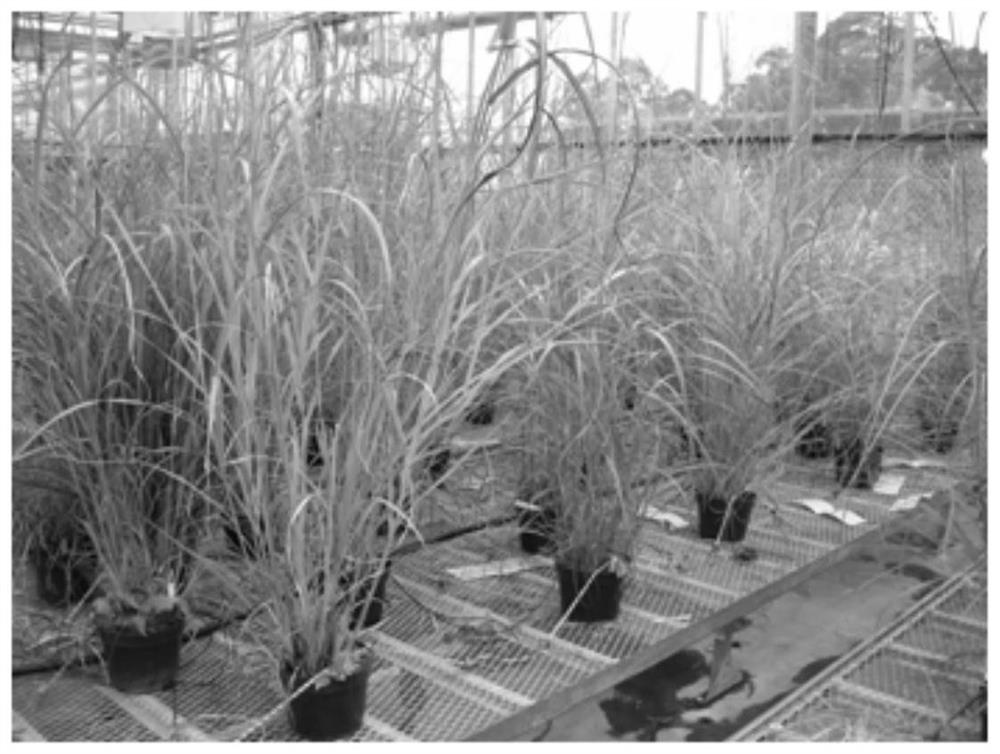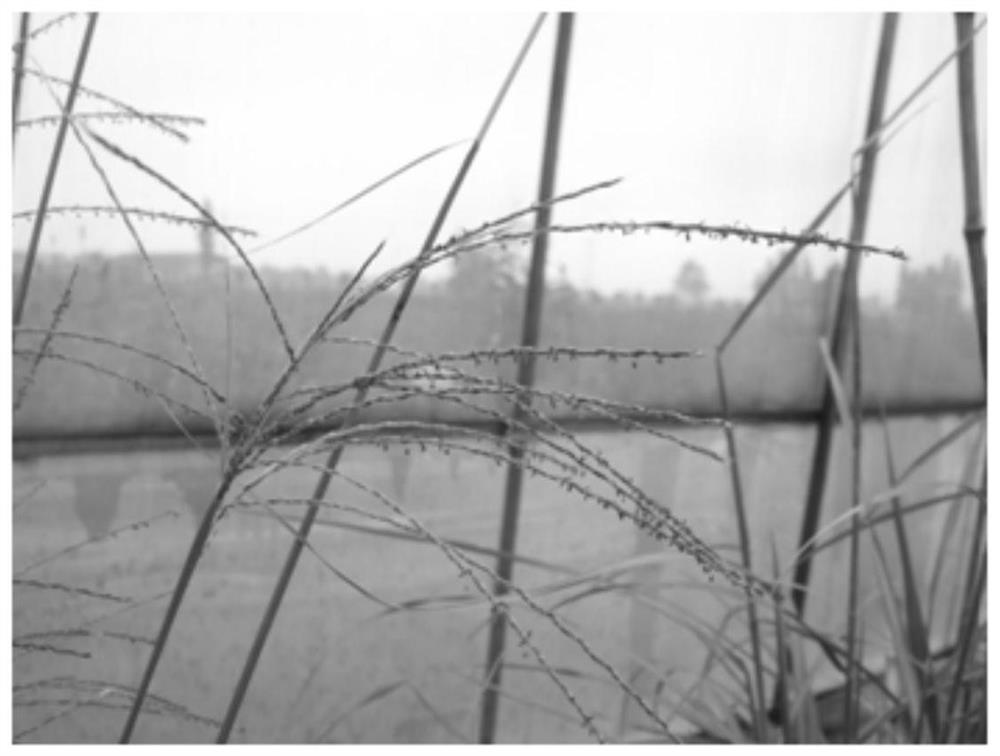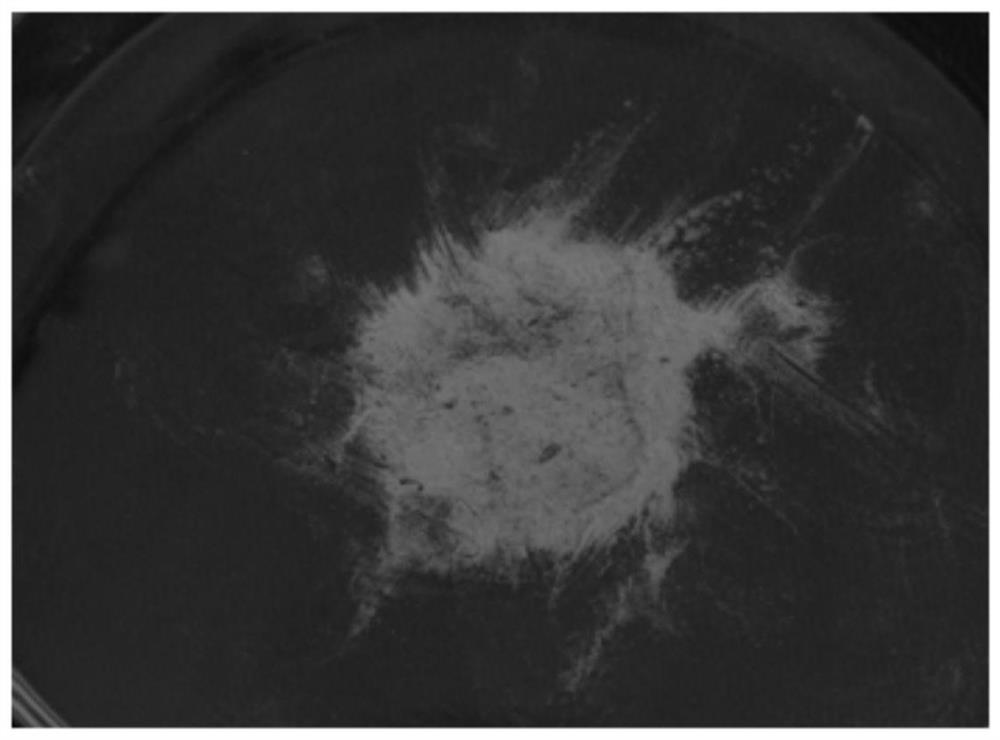A method for improving hybrid seed production efficiency of self-incompatibility gramineous plants
A technology for grass and hybrid seed production, which is applied in the field of improving the efficiency of self-incompatibility grass hybrid seed production, and can solve the problem of limited quantity and the amount of pollen released, affecting the yield and efficiency of hybrid seed production, and not flowering. Synchronization and other problems, to achieve the effect of low cost, outstanding effect, and prolonged flowering period of plants
- Summary
- Abstract
- Description
- Claims
- Application Information
AI Technical Summary
Problems solved by technology
Method used
Image
Examples
Embodiment 1
[0038] Plant material: awn genotype Ms03 (female parent of intraspecific cross) and Ms22 (male parent).
[0039] 1. Material preparation: germinate with awn Ms03 and Ms22 seeds. When the seedlings grow to a height of 20-30 cm on the seedling bed, transplant a single plant into a thickened medium-sized plastic flower pot. The cultivation medium used is nutrient soil.
[0040] 2. Plant cultivation: Place potted miscanthus seedlings in an intelligent greenhouse, and cultivate them at 24°C, 16 hours of light / 18°C, and 8 hours of darkness for about three months, water once a day, and replenish Hoagland plants three times a week Nutrient solution, and do a good job of aphid control.
[0041] 3. Plant pruning: After Miscanthus plants enter the flowering period, check the plants regularly every day, and use branch shears to cut off and clean the reproductive tillers from the base of the inflorescences that have been powdered in time, and add water and Hoagland once every morning and a...
Embodiment 2
[0047] Plant material: Miscanth genotype Ms03 (female parent of interspecific cross) and Nandi Ml32 (male parent).
[0048] 1. Material preparation: select rhizomes with 2-3 strong bud heads from genotype Ms03 or Ml32 plants, and transplant them into thickened medium-sized plastic flower pots, and the cultivation medium used is nutrient soil.
[0049] 2. Plant cultivation: Place the potted Miscanthus rhizome in an intelligent greenhouse, and cultivate it for about three months under the conditions of 24°C, 16 hours of light / 18°C, and 8 hours of darkness. Water once a day and supplement three times a week Hoagland plant nutrient solution, and do a good job of aphid control.
[0050] 3. Plant pruning: After the plant enters the flowering period, check the plant regularly every day, and use branch scissors to cut off and clean the reproductive tillers from the base of the inflorescences that have been powdered, and add water and Hoagland plants once every morning and afternoon. ...
PUM
 Login to View More
Login to View More Abstract
Description
Claims
Application Information
 Login to View More
Login to View More - Generate Ideas
- Intellectual Property
- Life Sciences
- Materials
- Tech Scout
- Unparalleled Data Quality
- Higher Quality Content
- 60% Fewer Hallucinations
Browse by: Latest US Patents, China's latest patents, Technical Efficacy Thesaurus, Application Domain, Technology Topic, Popular Technical Reports.
© 2025 PatSnap. All rights reserved.Legal|Privacy policy|Modern Slavery Act Transparency Statement|Sitemap|About US| Contact US: help@patsnap.com



